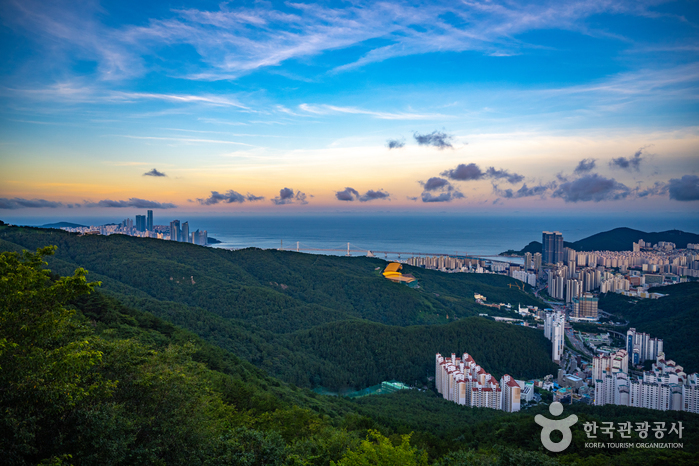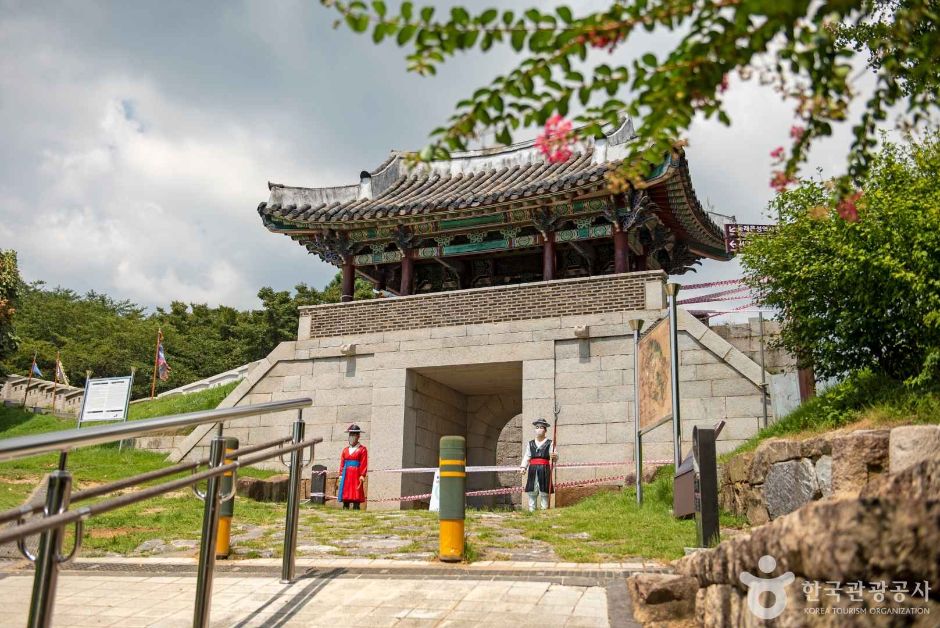Busan Cultural Center (부산문화회관)
8.3Km 2021-08-06
1, UN pyeonghwa-ro 76beon-gil, Nam-gu, Busan
+82-51-607-6000
Busan Cultural Center began construction in October 1983 and finished constructing three halls in 1993. In April 2010, the cultural center underwent renovations and reopend in October. The architecture format used traditional Korean houses with a large, medium, and small halls. Large gates and walls were removed to allow easy access. The roof used concrete slabs to recreate traditional patterns and the exterior walls are made of granite stone.
Hyewonjeongsa Temple (혜원정사)
8.5Km 2024-02-22
47 Gobun-ro 68beon-gil, Yeonje-gu, Busan
The "jeongsa" of Hyewonjeongsa Temple refers to a temple, meaning a place where practitioners dwell and dedicate themselves to spiritual cultivation. It houses various halls such as Daeungbojeon, Manbuljeon, Samseonggak, Bell Pavilion, Yosachae, and Statue of Avalokitesvara Bodhisattva. There is a hiking trail leading to the summit of Myobongsan Mountain, from where one can enjoy a panoramic view of Busan city.
Hwangnyeongsan Mountain ()
8.6Km 2024-10-25
391-39 Hwangnyeongsan-ro, Nam-gu, Busan
+82-70-7543-5249
Hwangnyeongsan Mountain offers a lush green forest easily accessible from downtown Busan. The mountain is popular for hiking, as well as taking in the nightscape. The mountain stretches across Busanjin-gu, Nam-gu, and Suyeong-gu districts, and with an altitude of 427 meters, it is the second tallest mountain in the Geumnyeon Mountain Range. Despite this distinction, the summit can be reached after a two to three-hour hike. At the foot of the mountain, one can find a citizen's recreation area and a youth training center. Choosing which mountain trail to take depends on the transportation options available.
Hwangnyeongsan Observatory (황련산 전망대)
8.6Km 2024-10-29
391-39 Hwangnyeongsan-ro, Nam-gu, Busan
Hwangnyeongsan Mountain, where the observatory is located, is in the center of Busan as it spans across four districts (Busanjin-gu, Yeonje-gu, Suyeong-gu, and Nam-gu) and is a popular driving course in spring when the cherry blossoms bloom along the road. The Hwangneyongsan Observatory also makes it a perfect place for a night tour. A city that lies below the mountains looks even more beautiful with the cozy lights that illuminate the observatory and the sparkling radio tower.
Yeon-San Dangdang Korean Medicine Hospital (연산당당한방병원)
8.9Km 2025-10-23
82 World cup-daero, Yeonje-gu, Busan
Yeonsan Dangdang Korean Medicine Hospital is a 98-bed hospital located in central Busan, near Yeonsan Station. The hospital offers traditional Korean medicine treatments, internal medicine, orthopedic care, and health screenings. It also has staff who speak English, Chinese, Japanese, and Vietnamese, ensuring that international patients can receive care in a comfortable and welcoming environment.
E-Mart - Yeonje Branch [Tax Refund Shop] (이마트 연제)
9.0Km 2024-04-22
89, Yeonsu-ro, Yeonje-gu, Busan
-
Olive Young - Busan Yeonsan Branch [Tax Refund Shop] (올리브영 부산연산점)
9.2Km 2024-06-27
16 Bansong-ro, Yeonje-gu, Busan
-
Aritaum - Yeonsan Rotary Branch [Tax Refund Shop] (아리따움 연산로타리)
9.3Km 2024-06-27
11, Bansong-ro, Yeonje-gu, Busan
-
Olive Young - Yeonsan Station Branch [Tax Refund Shop] (올리브영 연산역점)
9.3Km 2024-06-28
1086, Jungang-daero, Yeonje-gu, Busan
-
Site of Dongnaeeupseong Walled Town (동래읍성지)
9.3Km 2024-09-26
48-2 Myeongnyun-dong, Dongnae-gu, Busan
Site of Dongnaeeupseong Walled Town, built towards the end of the Goryeo dynasty and the early Joseon dynasty, was a significant fortress during the Imjin War in 1592. It served as the main battleground where civilians, officials, and soldiers united to resist the Japanese forces. Recognizing the strategic importance of the Dongnae area, a much larger fortress was constructed in 1731, replacing the original structure from one built during war. Today, only traces of the fortress remain, with the Bukmun Gate, Insaengmun Gate, Dongjangdae Command Post, Seojangdae Command Post, and Bukjangdae Command Post having been restored.


![E-Mart - Yeonje Branch [Tax Refund Shop] (이마트 연제)](http://tong.visitkorea.or.kr/cms/resource/70/2885470_image2_1.jpg)
![Aritaum - Yeonsan Rotary Branch [Tax Refund Shop] (아리따움 연산로타리)](http://tong.visitkorea.or.kr/cms/resource/55/3314155_image2_1.jpg)

 English
English
 한국어
한국어 日本語
日本語 中文(简体)
中文(简体) Deutsch
Deutsch Français
Français Español
Español Русский
Русский